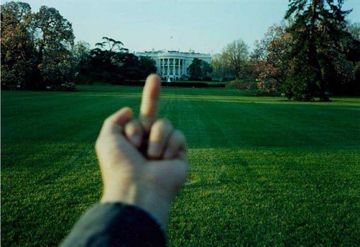Yinka Shonibare MBE says in his season 5 segment that he would like to have the “trappings of wealth” himself, even though he may be criticizing it. And being made a Member of the Most Excellent Order of the British Empire is classic irony. It’s like giving Occupy Wall Street protesters keys to the city. But then again, maybe we should be giving these people keys to the city instead of forcing them to stop setting up and speaking up. Instead of blocking out reporters, maybe the mayor should be giving the press police escorts into the action. “Occupy” protests are calling attention to the inequality of 99% feeling the ever-increasing weight of a financial foot across their throat. People continue to struggle without jobs, health care, and especially hope. The fact that Occupy Wall Street protesters do not have specific “demands” doesn’t bother me. Calling attention to inequality in this way is a positive thing. More voters- from any political party- need to add their voices to the protests. (New York Close Up artist Martha Colburn recently filmed an Occupy Wall Street protest. Check it out here).
Working with a theme like inequality in the classroom can be a challenge. Similar to teaching about racial prejudice, there’s a ton that may go unsaid in a class discussion, but that doesn’t mean it isn’t important for students to think about (and even write about) these things. What do our students imagine Occupy protesters stand for, or want? What would they do if in charge of the protests? How can they get involved, even if they’re not able to actually attend?
When I think about teaching with the theme of inequality in the classroom, I am first interested in the ways it can be taught at different grade levels. For example, in elementary school, students can be taught that shared decision making and collaboration is important for positive interaction among people. Working with an artist such as Oliver Herring can be a good place to start, as he works with others to help make his photographs and videos.
Middle school students, especially given the recent popularity of anti-bullying campaigns, can be exposed to the work of season 3 artist Krzysztof Wodiczko, especially in his Art21 Exclusive “Peace”, as he encourages viewers to speak “what is unspeakable” in order to avoid a “death of democracy”. If this doesn’t connect to Occupy Wall Street, I don’t know what does.
Finally, high school students might look into the season 4 segment featuring Allora and Calzadilla as they share the story behind their interactive work, “Chalk (Lima)”. Here, students get the opportunity to learn about protest in a way that is unconventional and non-violent, to say the least. Unless, of course, you consider “arresting” chalk particularly violent.
Other Art21 artists that address inequality in their work include Mark Bradford, Jenny Holzer and Alfredo Jaar, to name a few. And if you have used Occupy Wall Street in the classroom or taught about inequality with contemporary art, please share your story.
This week, let’s give thanks for the Occupy Wall Street protesters and Occupy protesters in dozens of other cities as they speak up for 99% of the 99% unable to stand alongside them.





Pingback: Teaching with Contemporary Art Turns Four | Art21 Magazine